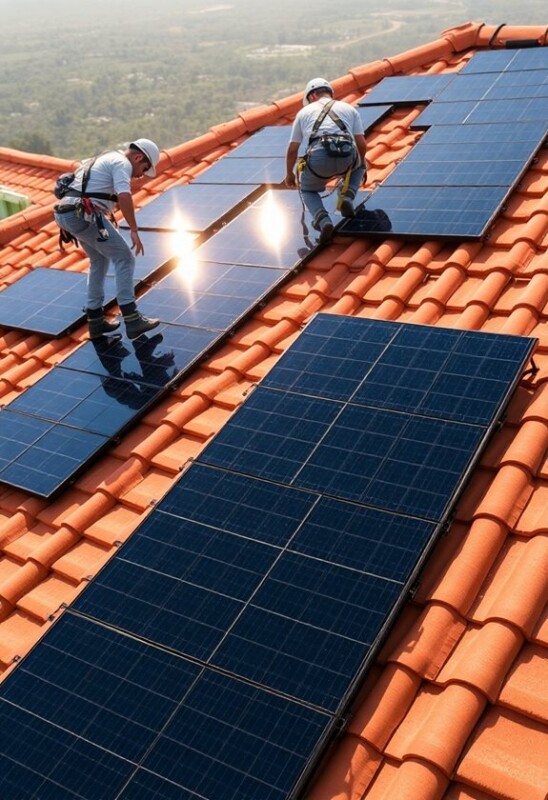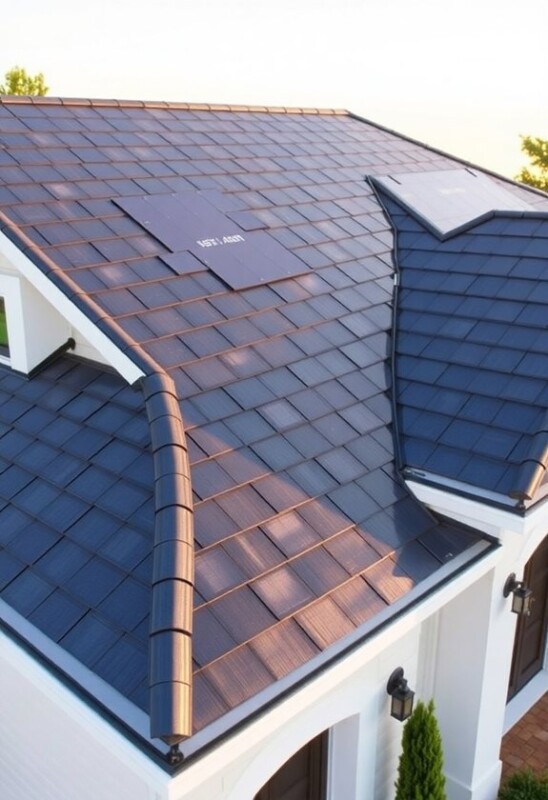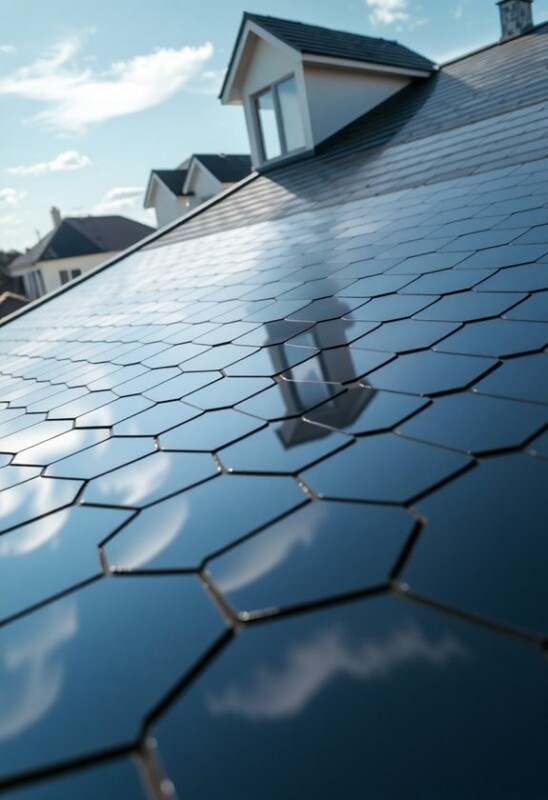Consider five key factors when choosing between solar tiles and panels: Initially, panels require simpler installation on existing roofs while tiles need full roof replacement. Second, panels deliver higher efficiency at 15-22% versus tiles at 10-20%. Third, panels cost considerably less at $3/watt compared to tiles at $15/watt. Fourth, both need regular maintenance but panels are easier to clean. Fifth, both increase property value by 4-6.8%. These core differences shape your ideal solar solution.
Key Takeaways
- Solar panels deliver superior energy efficiency at 15-22% and require less roof space than tiles for equivalent power generation.
- Traditional panels cost significantly less at $3 per watt compared to solar tiles at $15 per watt.
- Panels can be installed on existing roofs, while tiles require complete roof replacement, making panels more versatile.
- Solar panels qualify for 100% federal tax credits, whereas tiles only receive 70% coverage.
- Annual maintenance is simpler with panels, requiring only regular cleaning and professional inspections to maintain optimal performance.
Understanding Installation Requirements and Methods

Before installing solar tiles or panels, a thorough pre-installation assessment must evaluate your roof’s structural integrity and ideal placement conditions.
You’ll need to identify potential installation challenges like skylights, vents, and chimneys that could interfere with optimal positioning.
Key safety measures include wearing soft-soled shoes and using proper scaffolding to protect both workers and your roof’s surface.
The installation process requires careful attention to mounting hardware, electrical connections, and waterproof sealing.
You’ll also need to ascertain your roof can support the added weight of solar components while maintaining proper drainage and weather resistance throughout the system’s lifespan.
Comparing Energy Output and Performance
When evaluating solar energy solutions, the performance gap between panels and tiles becomes immediately apparent in their efficiency ratings.
You’ll find panels deliver superior energy efficiency at 15-22%, compared to tiles at 10-20%. Adjustable angles and proven performance factors make panels more reliable for maximizing energy output.
- Panels require less roof space for equivalent power generation
- Panel systems maintain higher efficiency over their 25-30 year lifespan
- Modular design allows easy replacement of underperforming units
While tile technology continues advancing, panels remain the best choice for maximizing energy production, especially when considering their documented durability and established service networks.
Breaking Down the Cost Factors
Understanding the cost differences between solar panels and tiles reveals a significant pricing gap in the current market. You’ll find solar panels averaging $3 per watt, while Tesla’s tiles cost around $15 per watt. A cost breakdown shows installation expenses vary dramatically between options.
| Component | Solar Panels | Solar Tiles |
|---|---|---|
| Materials | $3/watt | $15/watt |
| Labor | 60% of cost | 60% of cost |
| Incentives | Full coverage | Partial coverage |
Your incentive analysis should factor that federal tax credits apply to 70% of tile costs but cover all panel expenses. Consider that tiles require new roof installation, while panels work with existing structures.
Evaluating Long-Term Maintenance Needs
Since regular maintenance directly impacts solar system performance, you’ll need to establish an all-encompassing care routine for either panels or tiles. Set your cleaning frequency based on your environment – twice yearly in clean areas, every three months in dusty or urban locations.
Professional inspections annually guarantee your system’s longevity and peak efficiency.
- Monitor your energy output consistently, scheduling cleanings when production drops
- Schedule professional inspections to catch minor issues before they become major problems
- Adapt your maintenance schedule based on local climate factors, especially after severe weather events
Your proactive approach to maintenance will enhance your solar investment’s long-term value while minimizing unexpected repair costs.
Assessing Property Value and Aesthetics

Solar installations can considerably improve your property’s market value, with recent studies showing increases ranging from 4% to 6.8%.
You’ll gain approximately $4,000 to $6,000 per kilowatt in added value, with newer systems commanding higher premiums.
For ideal value assessment, consider your system’s aesthetic integration.
Modern designs featuring architectural harmony, roof-matched colors, and smart monitoring systems typically yield better returns.
Your location matters too – high-demand urban areas and states with solar incentives see stronger value increases.
While 29 states offer property tax exemptions, you’ll want to check local regulations as tax implications can vary greatly by region.
Conclusion
Solar tiles and panels each offer distinct advantages for your renewable energy goals. You’ll need to weigh the 15-20% lower efficiency of tiles against their seamless aesthetics, and consider the 10-30% higher installation costs versus traditional panels. Your decision should factor in local building codes, roof configuration, and energy requirements. Track performance metrics and ROI calculations to determine which option best aligns with your property’s specific needs.


